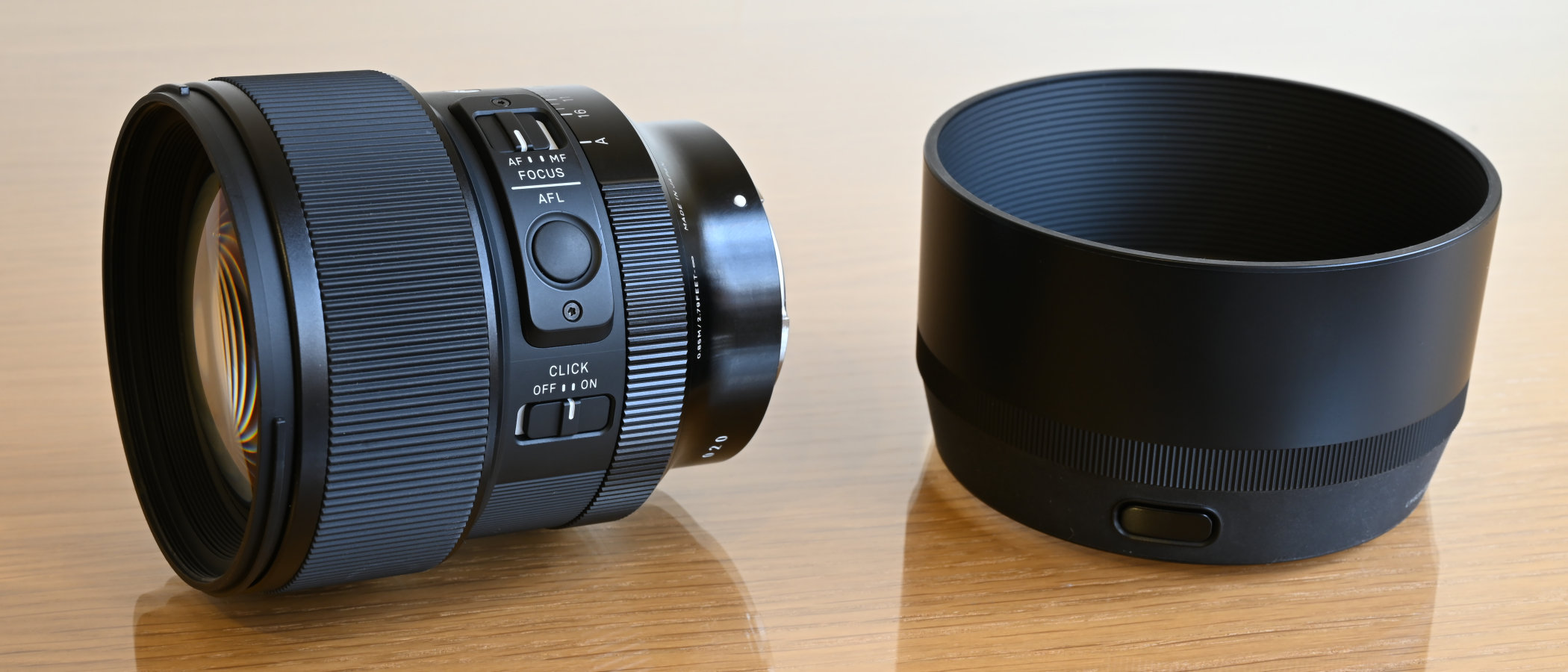Digital Camera World Verdict
We’ve long been fans of Sigma’s 85mm F1.4 DG HSM Art lens, which is available in Sony E-mount as well as in Canon EF and Nikon F options for DSLRs. The new DG DN Art has been redesigned from the ground up, exclusively for mirrorless Sony E and Leica L-mount cameras. It’s smaller, lighter and has superior handling with a useful set of onboard controls. Autofocus is fast and virtually silent, while image quality is simply sumptuous. It’s a thing of beauty.
Pros
- +
Super-sharp but with beautiful bokeh
- +
Manual aperture ring with a de-click switch
- +
Handy focus hold button
- +
Relatively compact and lightweight
Cons
- -
Pincushion distortion can be apparent
- -
Noticeable vignetting at f/1.4
Why you can trust Digital Camera World
Sigma’s 85mm f/1.4 DG HSM Art lens has become a favourite of many portrait and still life photographers who shoot with Canon and Nikon full-frame cameras. Sigma also offers the lens in an E-mount option, for use with Sony mirrorless bodies. However, at 95x125mm and 1,130g, it feels a bit of a mismatch for relatively slimline Sony cameras, resulting in a distinctly front-heavy package.
The new Sigma 85mm F1.4 DG DN Art lens is built purely for mirrorless cameras and represents a complete redesign, with an all-new optical path and autofocus system. It’s much smaller and lighter, at 83x94mm and 630g, yet packs a lot in with a raft of high-end handling features that are absent in the older DG HSM lens. As such, it’s ideal for use with Sony and Panasonic mirrorless full-frame cameras.
Specs
Mount: Sony E, Leica L
Full frame: Yes
Autofocus: Yes
Image stabilization: No
Lens construction: 15 elements in 11 groups
Angle of view: 28.6 degrees
Diaphragm blades: 11
Minimum aperture: f/16
Minimum focusing distance: 0.85m
Maximum magnification ratio: 0.12x
Filter size: 77mm
Dimensions: 83x94mm
Weight: 630g
Key features
Sigma’s 85mm DN Art looks a pretty tricked-up lens but its most standout feature is its glass. The optical path includes five SLD (Special Low Dispersion) elements, along with one aspherical element and no less than four high-refractive-index elements. The overall aim is not only to deliver exceptional sharpness and contrast, but also to minimize both lateral and axial chromatic aberrations. The latter is a common problem with fast-aperture lenses, causing color fringing around high-contrast edges in a scene, in front of and behind the point of focus. It can show up anywhere in the entire image frame, instead of being mostly relegated to the edges and corners, and can’t be fixed with automatic in-camera corrections.
Whereas the 85mm DG HSM lens features a ring-type ultrasonic autofocus system, the DN lens has a stepping motor. As well as contributing to a reduction in the size and weight of the build, the system is optimised for both phase and contrast operation, and works really well with face-detection and eye-detection AF. The lens also incorporates a number of neat handling features, which we’ll come to next.
Build and handling
The mix of aluminium and TSC (Thermally Stable Composite) materials, along with a plated brass mounting plate and comprehensive range of weather-seals, results in a robust and solid-feeling build. Indeed, the construction looks and feels of a fully professional-grade standard.
Handling exotica includes an ‘AF L’ autofocus lock button, ideally positioned to fall under your left thumb, just below the AF/MF focus mode switch. Just behind these is a manual aperture ring, which operates throughout the range of f/1.4 to f/16 in one-third f/stop click steps. As a further bonus, there’s a ‘click on/off’ switch, which enables a simple de-click facility for stepless aperture control during movie capture. More uncommonly there’s also a locking switch that enables you to lock the aperture ring in its auto setting, so that aperture is controlled from the host camera and you can’t jog the aperture ring accidentally. All in all, handling is a delight.
Performance
The lens lives up to its claims with fast and virtually silent autofocus. Also as promised, sharpness is exceptional across most of the frame, even when shooting wide-open at f/1.4. Indeed, it eases ahead of the larger DG HSM lens in this respect, although the older lens is slightly sharper towards the extreme edges and corners of the frame. Vignetting in the DN lens is also more pronounced at f/1.4 but this can actually be a desirable attribute for portraiture and still life photography, where the relative lack of extreme corner-sharpness can be similarly advantageous, literally focusing the attention on the main subject.
At least as important as sharpness, and arguably more so for this class of lens, is the quality of bokeh (appearance of defocused areas within images). The lens scores very highly here as well, with buttery smooth bokeh. It delivers impressively soft edges for bokeh discs, commonly caused by defocused lights or bright spots within images. The ‘onion ring’ effect often seen within bokeh discs is a non-issue with this lens. Bokeh also remains very good when stopping down, helped by a particularly well-rounded 11-blade aperture diaphragm.
Colour fringing is amazingly negligible, both in terms of lateral and axial chromatic aberrations, across the entire image frame and into the extreme corners. Resistance to ghosting and flare is also extremely good. Our only criticism of image quality is that, whereas the 85mm DG HSM is a virtually distortion-free lens, the DN gives noticeable pincushion distortion. Even so, it’s easily fixed with in-camera corrections or at the editing stage.
Sample images


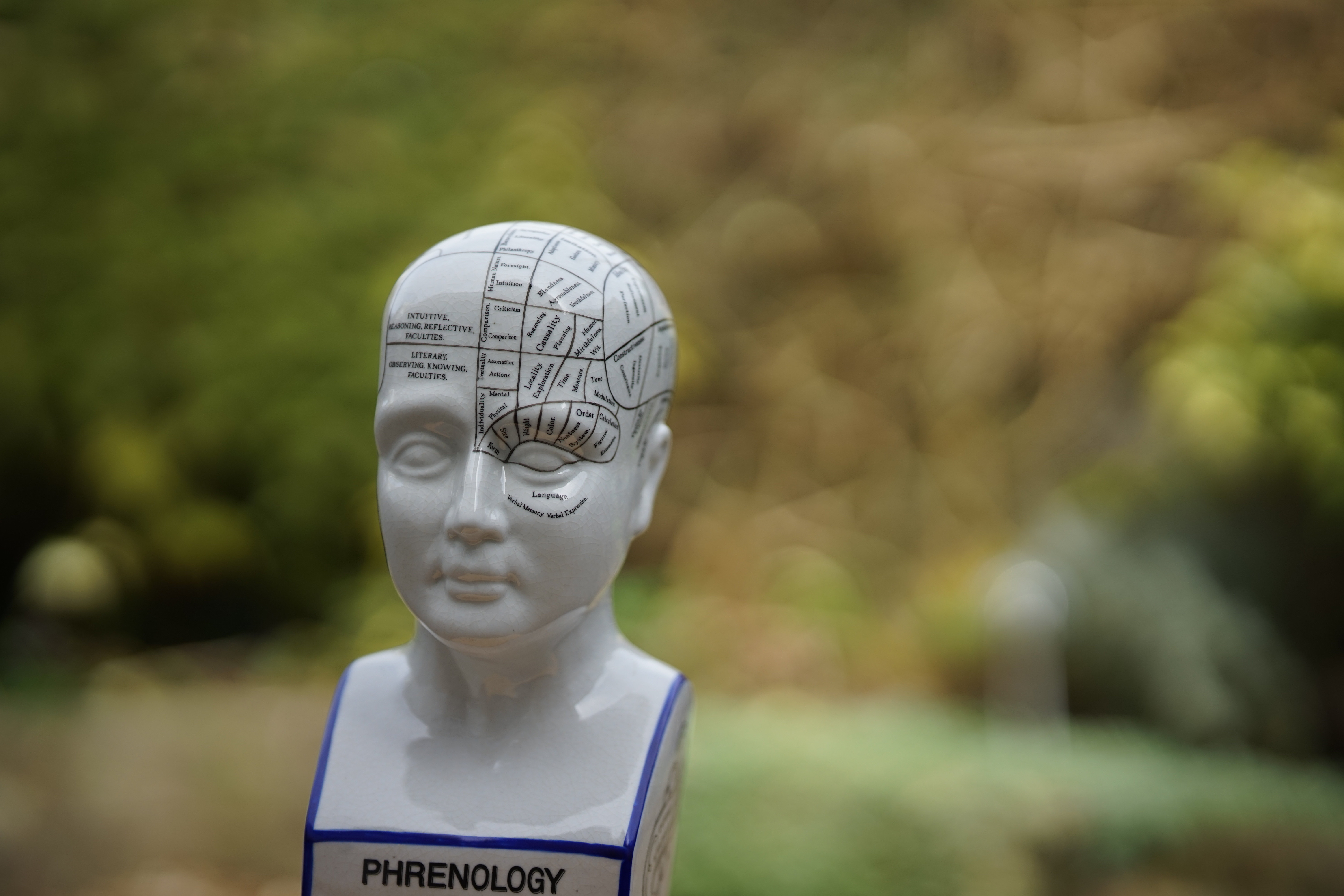
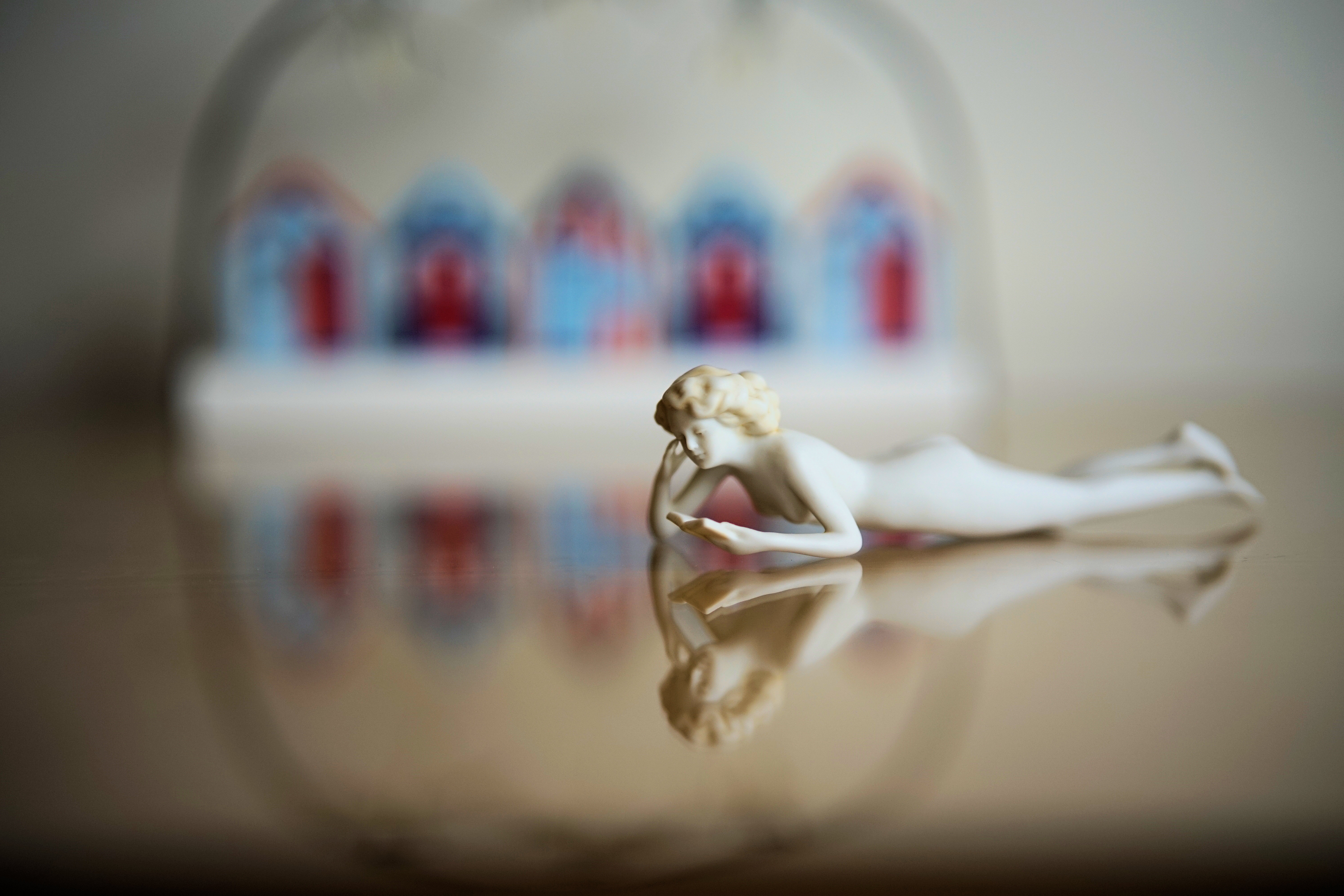
Lab tests
We run a range of lab tests under controlled conditions, using the Imatest Master testing suite. Photos of test charts are taken across the range of apertures and zooms (where available), then analyzed for sharpness, distortion and chromatic aberrations.
We use Imatest SFR (spatial frequency response) charts and analysis software to plot lens resolution at the centre of the image frame, corners and mid-point distances, across the range of aperture settings and, with zoom lenses, at four different focal lengths. The tests also measure distortion and color fringing (chromatic aberration).
Sharpness:
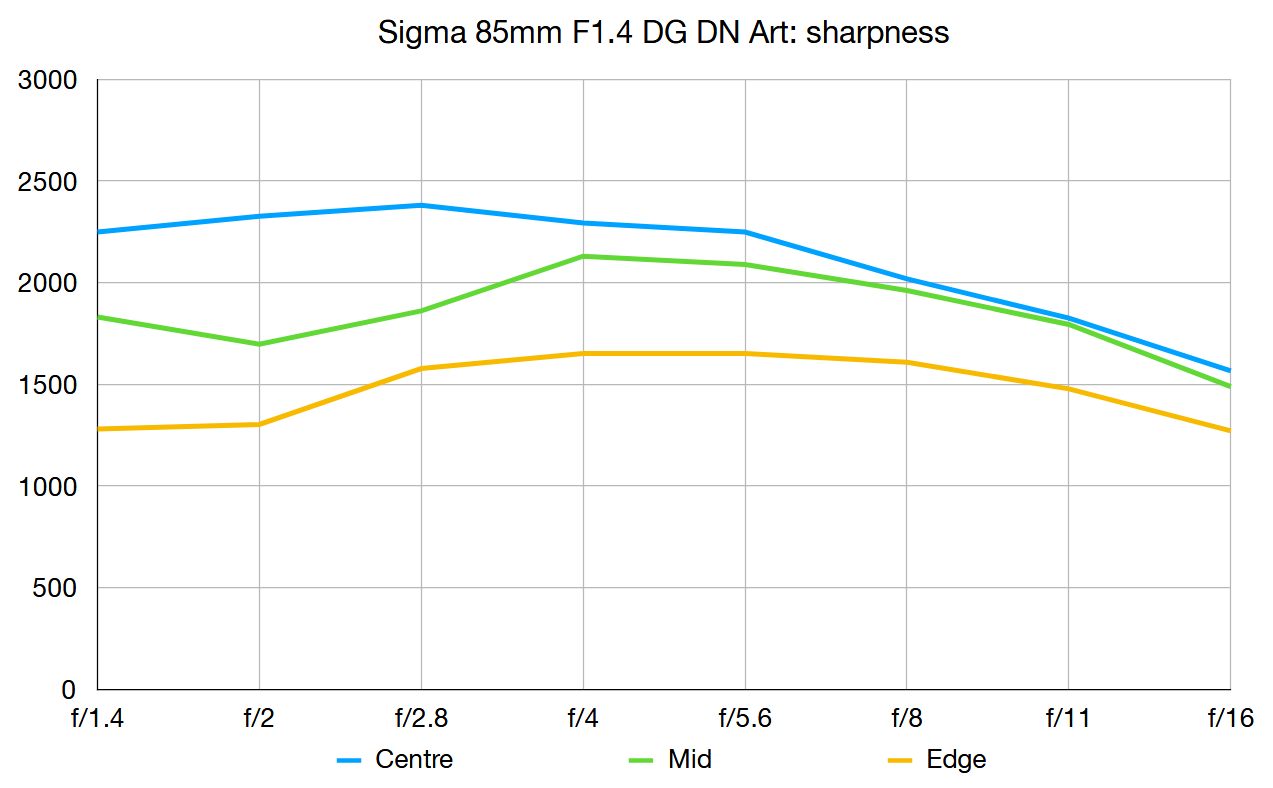
Centre-sharpness is exceptional and remains fabulous even wide-open at f/1.4. Wide-aperture corner-sharpness is less impressive but that’s generally not a problem.
Fringing:
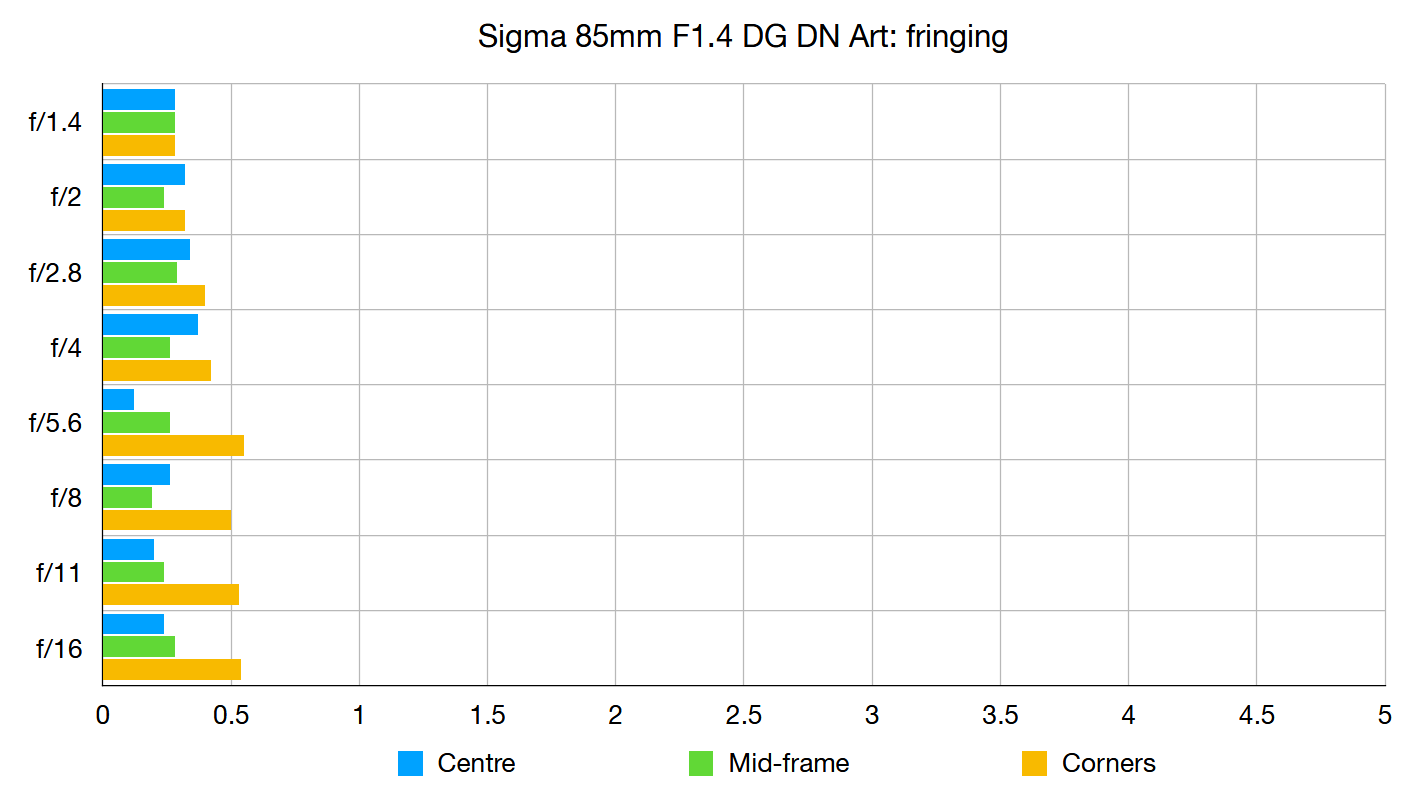
Lateral chromatic aberration is extremely minimal and axial chromatic aberration, sometimes referred to as ‘bokeh fringing’ is also very negligible.
Distortion: 3.54
A negative score indicates barrel distortion, a positive score pincushion. A score of zero signifies no distortion.
The level of pincushion distortion can be noticeable in architectural and product photography but isn’t really an issue for portraiture. In-camera corrections are generally available and the regular nature of the distortion also makes it easy to correct during editing.
Verdict
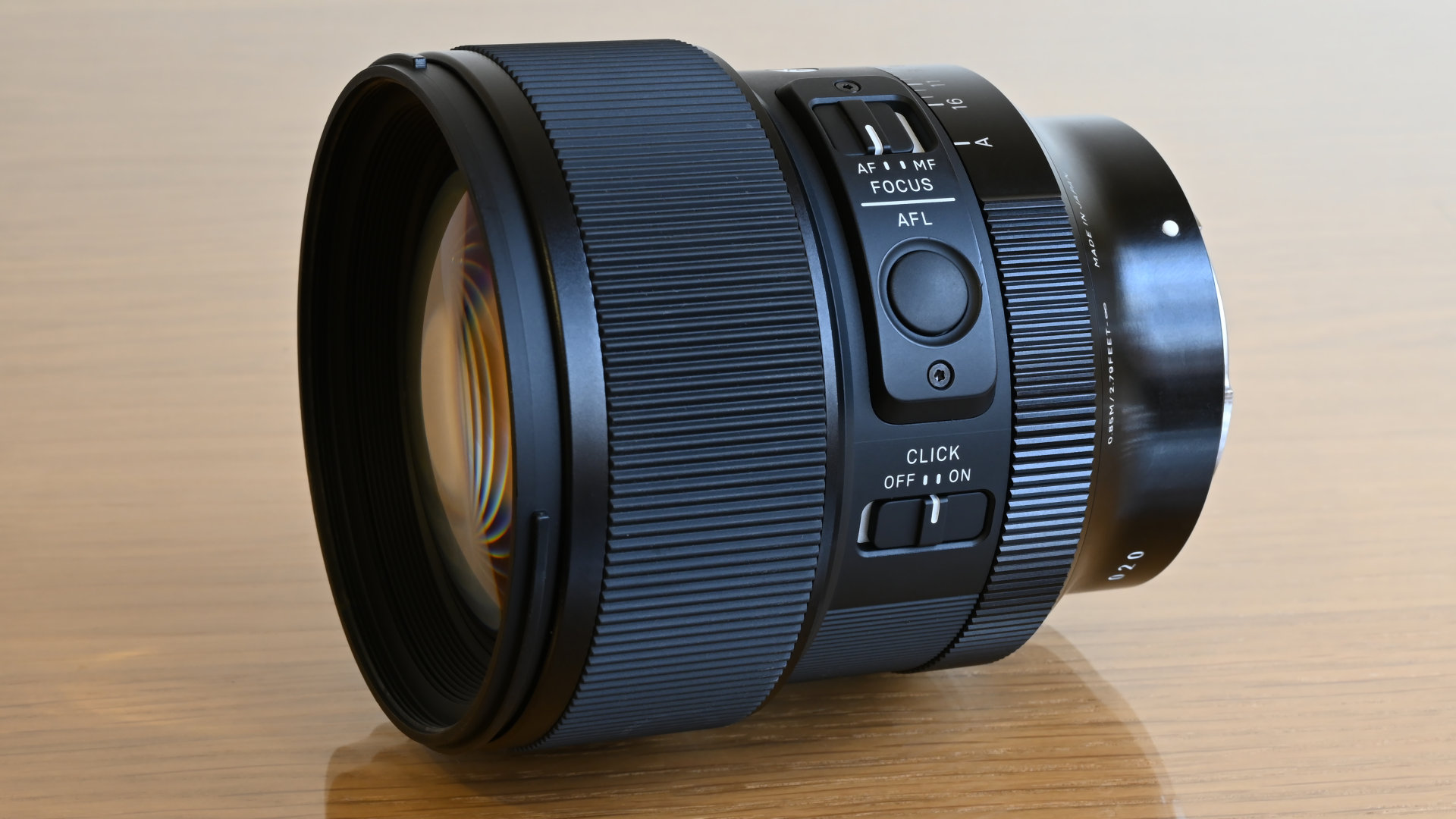
A star performer, this lens delivers fabulous image quality with superb sharpness and contrast, negligible color fringing and beautiful bokeh. It’s a dream for portraiture and still life, not only due to the quality of the results, but because handling is so refined. Relatively compact and lightweight for such a ‘fast’ 85mm lens, it’s a joy to use. And while it’s not cheap, it’s very good value for money at the price.
Read more:
Matthew Richards is a photographer and journalist who has spent years using and reviewing all manner of photo gear. He is Digital Camera World's principal lens reviewer – and has tested more primes and zooms than most people have had hot dinners!
His expertise with equipment doesn’t end there, though. He is also an encyclopedia when it comes to all manner of cameras, camera holsters and bags, flashguns, tripods and heads, printers, papers and inks, and just about anything imaging-related.
In an earlier life he was a broadcast engineer at the BBC, as well as a former editor of PC Guide.

